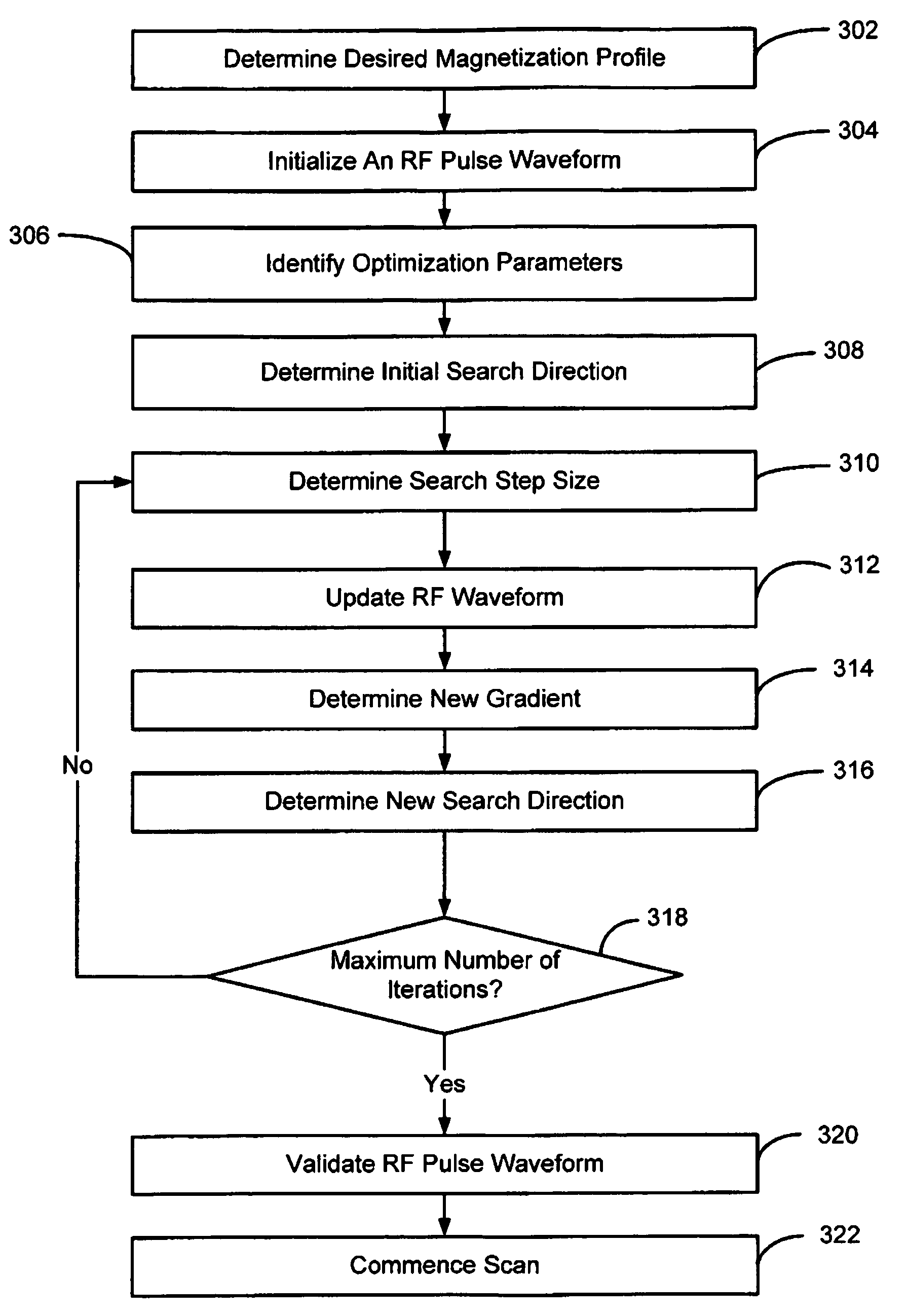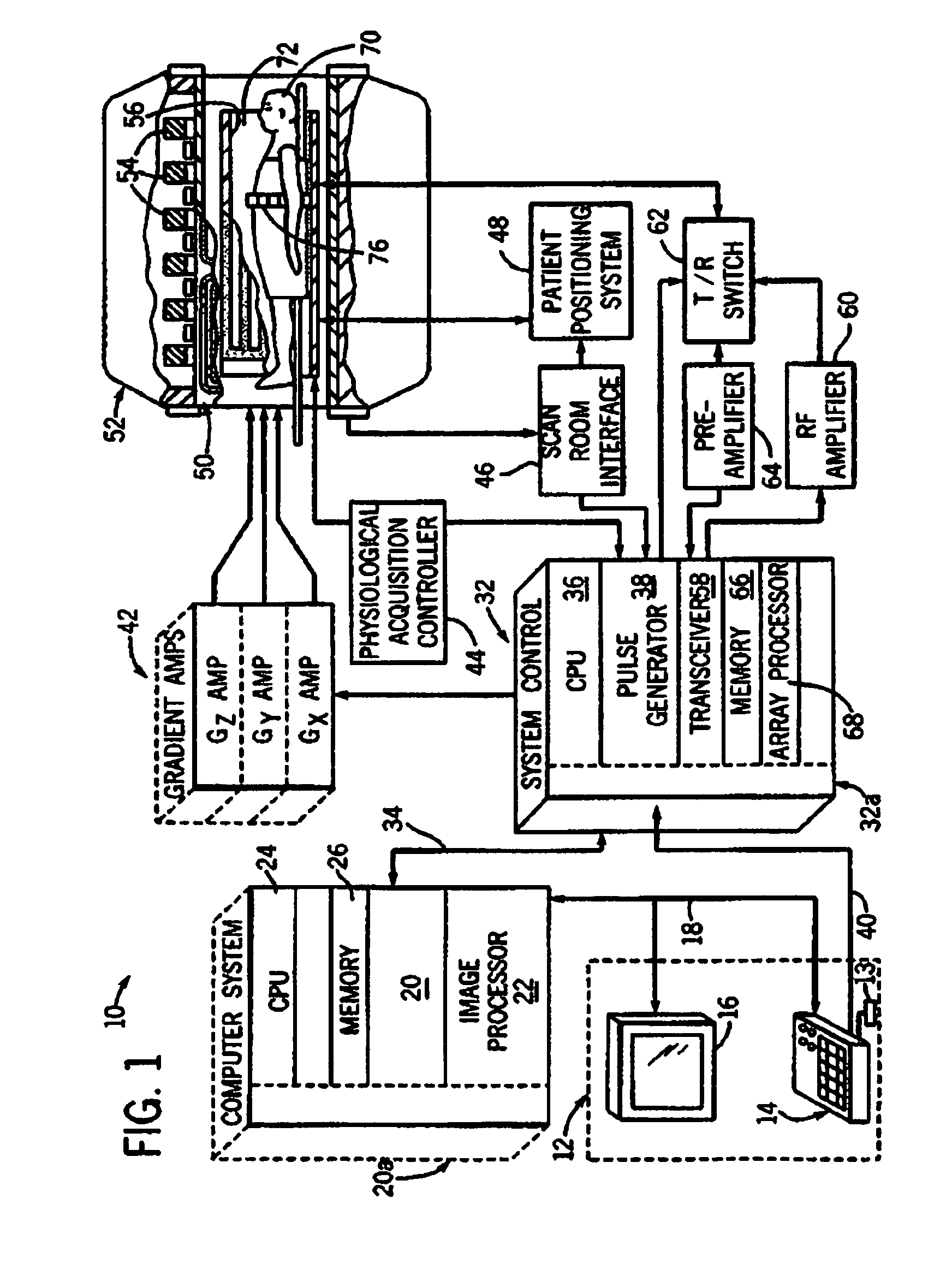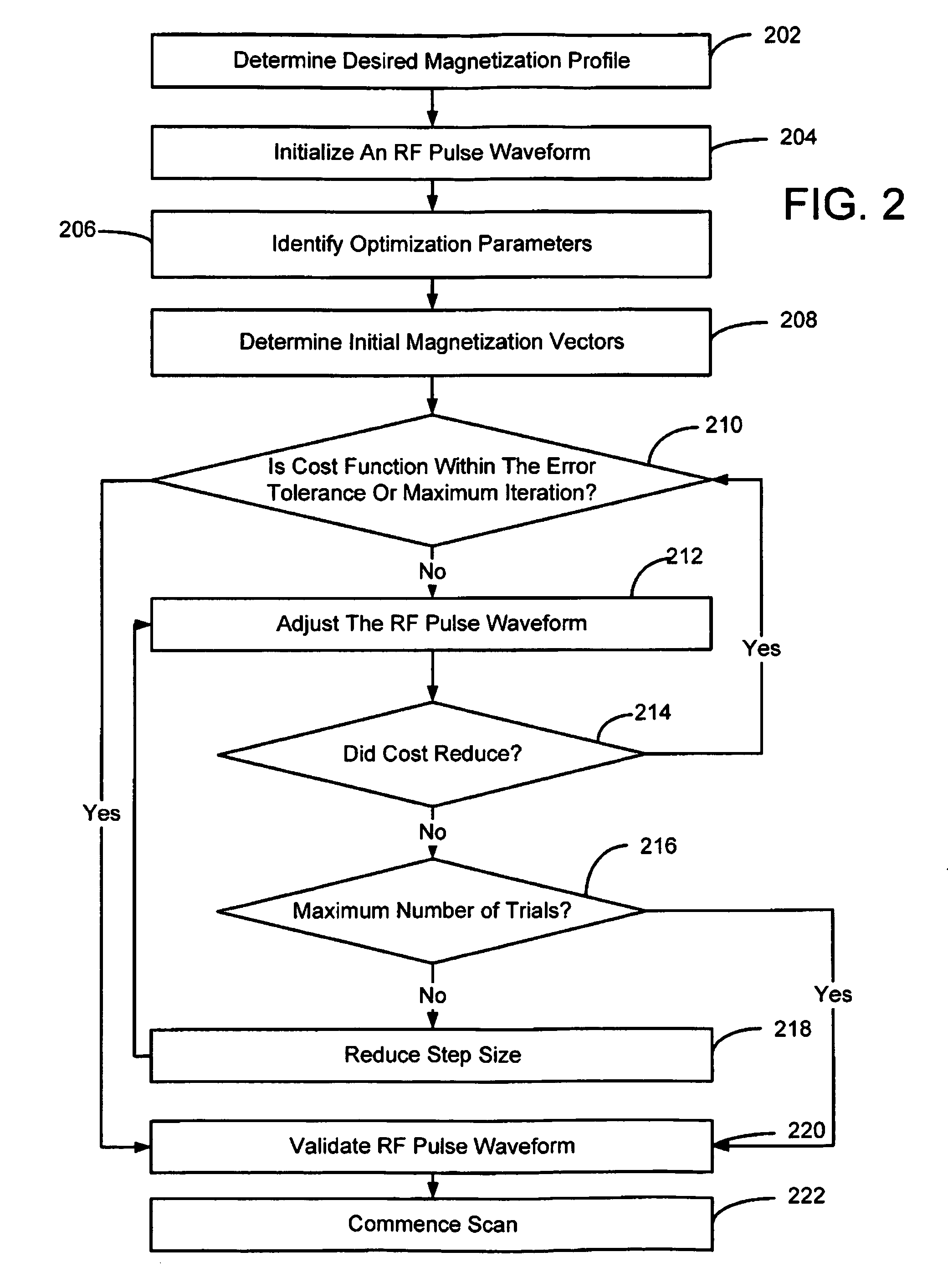System and method for phase relaxed RF pulse design
a phase relaxation and pulse design technology, applied in the field of magnetic resonance imaging (mri), can solve the problems of inaccurate design, over-constrained, and unoptimized magnitude profiles
- Summary
- Abstract
- Description
- Claims
- Application Information
AI Technical Summary
Benefits of technology
Problems solved by technology
Method used
Image
Examples
Embodiment Construction
[0021]In the following detailed description, numerous specific details are set forth in order to provide a thorough understanding of embodiments. However it will be understood by those of ordinary skill in the art that the embodiments may be practiced without these specific details. In other instances, well-known methods, procedures, components and circuits have not been described in detail so as not to obscure the embodiments.
[0022]FIG. 1 is a schematic block diagram of an exemplary magnetic resonance imaging system in accordance with an embodiment. The operation of MRI system 10 is controlled from an operator console 12 that includes a keyboard or other input device 13, a control panel 14 and a display 16. The console 12 communicates through a link 18 with a computer system 20 and provides an interface for an operator to prescribe MRI scans, display the resultant images, perform image processing on the images, and archive data and images. The computer system 20 includes a number o...
PUM
 Login to View More
Login to View More Abstract
Description
Claims
Application Information
 Login to View More
Login to View More - R&D
- Intellectual Property
- Life Sciences
- Materials
- Tech Scout
- Unparalleled Data Quality
- Higher Quality Content
- 60% Fewer Hallucinations
Browse by: Latest US Patents, China's latest patents, Technical Efficacy Thesaurus, Application Domain, Technology Topic, Popular Technical Reports.
© 2025 PatSnap. All rights reserved.Legal|Privacy policy|Modern Slavery Act Transparency Statement|Sitemap|About US| Contact US: help@patsnap.com



